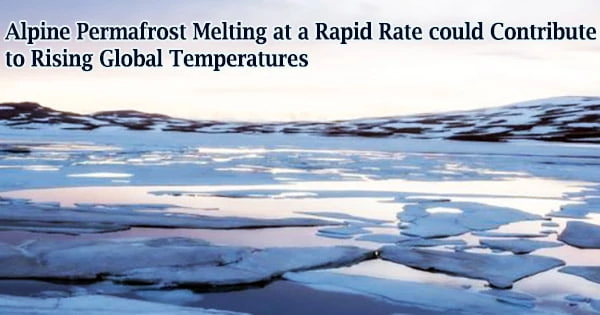Scientists can glean a vision of Earth’s future from the ancient sludge of lakebeds in Asia’s Tibetan Plateau. That future, it turns out, will resemble the mid-Pliocene warm period, which lasted 3.3 million to 3 million years and saw average air temperatures at mid-latitudes rarely fall below freezing.
Permanent ice was just starting to cling to the northern polar regions at the time, and mid-latitude alpine permafrost, or persistently frozen soil, was far more limited than it is today.
There are 1,500 trillion grams of carbon in the world’s permafrost now. That’s more than double the amount stored in the atmosphere. Alpine permafrost, which is found at high elevations closer to the equator, is less well studied than arctic permafrost yet contains 85 trillion grams of carbon.
When melted, it can emit greenhouse gases such as carbon dioxide and methane, which have an impact on world temperature. Alpine permafrost occurs at heights where typical temperatures are low enough to keep the ground permanently frozen; nonetheless, much alpine permafrost is discontinuous.
The overall extent of alpine permafrost is unknown. Bockheim and Munroe compiled estimates from three sources and tallied them by region, totaling 3,560,000 km2 (1,370,000 sq mi). Permafrost in the Andes has yet to be discovered. Its size has been calculated to determine how much water is trapped in these places.
According to recent research published in Nature Communications, Alpine permafrost is anticipated to melt at a faster rate than arctic permafrost under present global warming circumstances, perhaps contributing even more to rising global temperatures.
We need better and broader studies of the vulnerability of alpine regions under global warming scenarios. There’s been a lot of focus on the stability of arctic permafrost, because it covers more land area and contains a huge reservoir of organic carbon trapped in permafrost, but we also need to be aware that alpine regions stand to lose more permafrost proportionally and are important in understanding of potential carbon release under global warming scenarios.
Carmala Garzione
“Atmospheric carbon dioxide concentrations today are similar, or maybe even higher, than the mid-Pliocene because of the burning of fossil fuels, and so scientists point at that time period as an analog for our current and near-future climate,” said paper co-author Carmala Garzione, dean of the University of Arizona College of Science.
“We’re not feeling the full effects of the rise in atmospheric carbon dioxide yet because our Earth system takes time to adjust.”
“We wanted to estimate the stability of modern permafrost globally in a warmer-than-today climate scenario,” said Feng Cheng, the paper’s lead author and a professor at Peking University in China. Cheng formerly worked with Garzione as a postdoctoral fellow.
“Our findings were very surprising and highlight the fact that we need to put more effort into monitoring the stability of the permafrost in the alpine region.”
The researchers used carbonate, a mineral family that developed in a Tibetan Plateau lake, to calculate temperatures during the Pliocene (5.3 to 2.6 million years ago) and Pleistocene periods (between 2.6 million and 11,700 years ago).
When algae blooms in lakes, it absorbs carbon dioxide from the water, lowering the acidity of the lake. As a result of the decline, the lake begins to create fine-grained carbonate minerals, which settle near the lake’s bottom. The atoms in that carbonate can be used as a time-traveling thermometer since they reflect the temperature at which the carbonate formed.
The Tibetan Plateau, at an elevation of over 15,400 feet, is the world’s largest alpine permafrost region, but others can be found in central Asia’s Mongolian Plateau, the Canadian and American Rocky Mountains, the southern reaches of the Andes, and other mountain ranges worldwide at elevations where the air temperature is consistently below freezing.
The researchers also created a model of the Pliocene paleoclimate on Earth. They discovered that in the Pliocene, the average temperature of much of the Tibetan Plateau was above freezing, as was the case for many alpine places throughout the world.
According to the simulation, 20 percent of arctic permafrost land area and 60 percent of alpine permafrost land area will be lost in the future at current levels of atmospheric carbon dioxide. Under greater atmospheric carbon dioxide concentrations, high altitude alpine regions are more sensitive to warming than high latitude arctic regions.
“The Pliocene is an important period as an ancient analog for how Earth will adjust to the carbon dioxide that humans have already released to the atmosphere,” Garzione said.
“We need better and broader studies of the vulnerability of alpine regions under global warming scenarios. There’s been a lot of focus on the stability of arctic permafrost, because it covers more land area and contains a huge reservoir of organic carbon trapped in permafrost, but we also need to be aware that alpine regions stand to lose more permafrost proportionally and are important in understanding of potential carbon release under global warming scenarios.”





